Tripwire for a Tiger:Selected Works of F. W. Champion
This book “Tripwire for a Tiger:Selected works of F. W. Champion” is a compilation of 24 articles written by a remarkable gentleman, F. W. Champion, who worked in the forests of pre-independent India and had authored two well-known books, With a Camera in Tiger-land and The Jungle in Sunlight and Shadow. In an era when hunting was the norm and photography was at its infancy, F. W. Champion not only photographed tigers but also pioneered photography through camera traps.

Tripwire for a Tiger
F. W. Champion’s two books are out of print and are difficult to procure. At times one is lucky to get it online sold second hand by someone. So a selection of his works made available in form of a book is a good sign as it helps today’s generation to get a glimpse of a bygone era and learn from his wisdom. F. W. Champion’s book with his articles arranged in chronological order gives us an idea about the pre-independent Indias wilderness areas and the prevailing thought process vis-a-vis preservation of various wilderness areas and wildlife.
Champion seems to have drawn inspiration from his contemporary, Dunbar Brander, and has quoted from Branders classic book on natural history Wild Animals in Central India. In an era, when hunting was more of a religion, Champion was among the few who stood out for the preservation of our wildlife. Incidentally, Jim Corbett – who killed his first maneater at the ripe old age of 54 and became renowned for his books Maneaters of Kumaon, The Maneating Leopard of Rudraprayag, Jungle Lore and others and has been despicably described as a tiger wallah in the foreword of this book Tripwire for a Tiger: Selected Works of F. W. Champion took up filming tigers and other wildlife after being inspired by Champions photography.
Champion in his previous book “The Jungle in Sunlight and Shadow” had expressed strong views about ethics regarding photography and filming wildlife. So it was very happy to again read his views about photography in this book “Tripwire for a Tiger” too. Wildlife photographers of today accustomed to riding in jeeps and using long telephoto lenses firing away at 10 frames per second at the sight of a tiger may at first scoff at the grainy black and white images present in this book. Reading this book will help such wildlife photographers get a perspective of how difficult photography was at that time, especially using wide angle lenses with flash gun that can only explode once to create an exposure.
Those photographers who have tried placing DSLR cameras to get a good quality image of an animal by remote trigger or scientists who place compact remote cameras for their work will be amazed to read the lengths to which F. W. Champion went to compose a good image of a tiger.
Champion on Photographic Composition:
If the camera is put too close, head-on pictures will often show bad perspective and part of the subject may be cut off; if it is put too far away, the intensity of light may be affected) which varies inversely as the square of the distance) and the photograph ruined by under-exposure. Then an effort must be made to guide the tiger into the right position and to induce him to give the pose desired. This may often put him off altogether or cause him to come in too fast.
Lastly, there is the artistic side of auto-photography. It seems to me that many animal photographers and critics of auto-photography do not in the least realise that it is not sufficient to obtain a mere photographic record of an animal, but that the pose must be a good one and the setting and background of the right type, if one wishes to produce a picture as well as a photograph.
While describing one of his celebrated photographs of the tiger F. W. Champion writes I had made my own settings by bending down bamboos over likely spots, and then I waited and waited. Either nothing came at all, or a jackal, or a hare, or a man, or anything but what I wanted fired off the flashlight. Then a tiger came on a bright moonlit night, and, spotting the tripwire, carefully stepped over it without touching it! At long last, when I had almost given up hope, a tiger came into my studio, producing the photograph reproduced.
Now this photograph, although it is one of my better efforts, still has several faults. Firstly, wild elephants came before the tiger, and although they didnt touch the tripwire, they very unkindly removed my carefully arranged bamboo arch from the right-hand side of the picture. Then the tiger blurred his off fore-leg by movement. I have remedied this to a certain extent by retouching, but the leg is still not posed in an artistic manner. Again, the track on which the tiger is walking is too straight and too broad. It has been blocked on both sides to centre the animal, but the straight line of the track passing out to the left of the picture does not help it from an artistic point of view. Lastly, owing to technical difficulties which I have not yet overcome, the photograph was unavoidably taken with a 6 in. lens, which has given false perspective, with the head and fore-legs too large in proportion to the hind-quarters, and the tail is little too much concealed.
Champion’s Advice Not to Fake Photographs
In todays digital age, photographers extensively manipulate their images. There are also incidents of some so called established photographers clicking a rarely sighted bird and duplicating it to create a photo of two of them in a frame. To all such photographers, he has strongly suggested not to take shortcuts, suggesting It is far more interesting to search and search until you finally succeed in finding your subject with the right background and the right lighting. Then, when you have made a good photograph, you have produced a picture that will give you more satisfaction than all the faked photographs in the world.
Photograph should tell a Story
There are a growing breed of wildlife photographers who select the background and blur it in their manic zeal to get a clean background. All such photographers may find his following words educative. He advises that every effort should be made to try to make the photographs tell a story, that is to say, the subject should be doing something that indicates some part of its lifes activities. Then, again, the background should blend in with the subject; it should not be too obtrusive or too vague, but it should be clearly part of the picture. In my opinion, at least twenty-five per cent of the pictorial value of an animal photograph lies in the background or setting, which may, indeed, make or mar a picture, and this is a point that many animal photographers miss.
Importance of Studying Art:
And lastly he says I strongly recommend everyone who aspires to become a good wildlife photographer to study the principles of composition in art and pictorial photography and to try to embody these principles in his animal pictures. Around 1920s there was an effort in USA to project cinematography as an art form. The early practitioners looked at art for inspiration as photography was a new invention. Soon photography could establish itself as an art form.Unfortunately, with the advent of digital era the focus is on digital manipulation, rather than creating an artistic image. The general masses due to their ignorance and inability to spend time to learn the art of photography, and editors of many magazines and newspapers in an effort to reduce cost have now mostly reduced photography into tripping of the shutter button. However if someone needs to excel in this area, then he/she should make an effort to study works of past masters.
Champion on Use of Public Opinion in conservation:
every effort should be made to make the general public realise how important it is to preserve the wildlife of a country while it is still there to preserve. At the same time, books and films that give the totally false impression that the jungles are full of terrible animals, eager to fall upon and destroy the unwary intruder, should be strongly discouraged. Most wild creatures whether they be such supposedly dangerous animals as tigers, elephants and rhinoceros desire only to live and let live so far as the human race is concerned, and a great deal of harm is done by portraying them in false colours for the sake of sensation or money-making.
F. W. Champion’s views on Sanctuaries and National Parks
Champion had strong views about preserving our wilderness areas for perpetuity. He says Every country should close certain areas in perpetuity and form them into National Parks. Such parks are of great value in educating the public, and it is to be regretted that no such national park as yet exists in India. Sanctuaries are sometimes useful, but their status is often precarious, and owing to the difficult control, they have not always proved a success in India”.
Protection of Rare Stragglers:
Champion had foreseen the human-animal conflicts and had suggested measures to control the crowd in such instances. When a rare animal, such as a rhinoceros, is known to have entered any particular district, a public proclamation should be made, warning the general public that a very high penalty will be imposed on anyone killing it. Unfortunately, even today the authorities dont impose Section 144 when a wild animal like leopard is seen near human habitation. Hence there have been many cases of mobs lynching the animals.
There are many more gems in the book Tripwire for a Tiger: Selected Works of F. W. Champion painstakingly compiled by his grandson James Champion. I wish the publisher could have put in some more efforts to create an index. That would have been easier for a researcher or a serious reader. Published by Rainfed Books, this book with a total of 202 pages and priced at Rs. 495 is surely a collectors item.
- Canon Launches Cine Servo 11-55 mm T2.95-3.95 lens - 10 September,2025
- Water Monitor Lizard in Sundarbans - 14 May,2025
- Radio collared Tigress - 30 January,2025

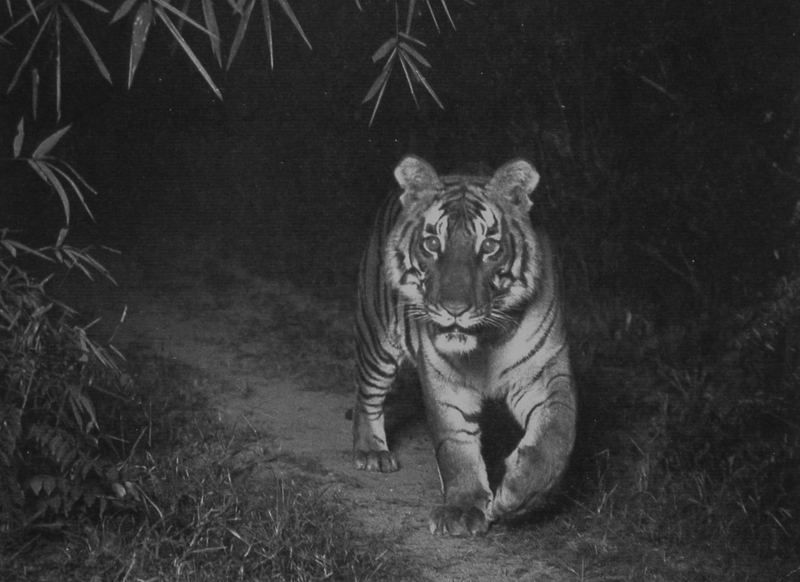
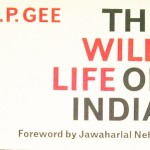
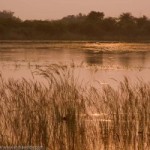
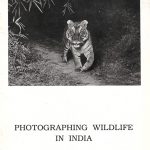

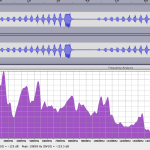
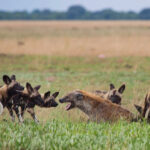
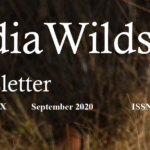
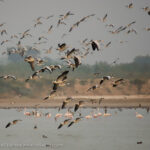
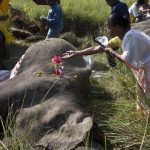



Thanks Sabyasachi for this wonderful book review. I had picked up M Krishnan’s ‘Of Birds and Birdsong’ after reading your review and will pick this one up too!